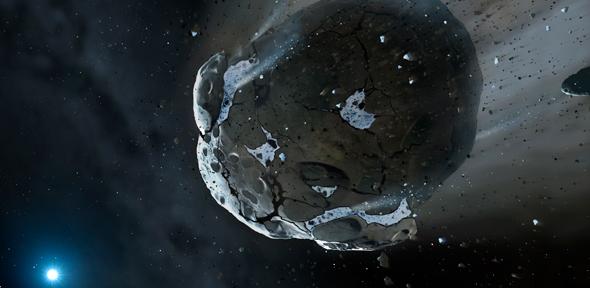A number of friends have contacted me about this press release about evidence of water-rich asteroids outside of the Solar System. The first thing to realize about professional astronomers is that they rarely know what's going on with other people's press releases. The second thing to realize is that those press releases are usually pretty different than the papers from which they originate.
The reason is that a press release is meant for the public, and often emphasizes aspects of the specific research project that are most interesting to the average person. However, astronomers are typically more interested in the "boring" or mundane details of the research. Thus, there exists an incompatibility. That, coupled with the fact that we don't usually have time in our days to check the Science section of our local papers means that astronomers typically miss one another's press releases and the pop-sci stories that flow from them.
However, sometimes the science is so basic and so universally cool that your neighborhood astronomer has, in fact, heard about it. And so was the case with the water-bearing exo-asteroid discovered by Jay Farihi and collaborators (Farihi et al. 2013, Nature). This group of astronomers have made a living looking at white dwarf stars with strange chemical abundances. White dwarfs are the end-states of stars like the Sun. Think of them as white-hot skeletons of stars. Once our Sun dies, it'll slough off it's outer layers and lay bare it's hot, ultra-dense core. That core is basically hydrogen and helium supported by an exotic type of pressure known as electron degeneracy pressure (see the wiki page for more details).
 |
| Jay Farihi: Hard. Core. Astronomer. |
 |
| A tidally-disrupted asteroid around a white dwarf. |
Farihi et al. noticed that there was an excess of oxygen on one particular white dwarf, and through some detective work they figured out that that oxygen came primarily in the form of water (two hydrogens and an oxygen atom). In fact, the asteroid responsible for these spectroscopic signatures was composed of 26% water by mass! Even more exciting is the exotic environment in which this water was detected. How cool is the thought of the material necessary for life being found around a stellar skeleton? Astronomy! Science! Fun!
Check out the paper on the arXiv.

Comments
Close call.